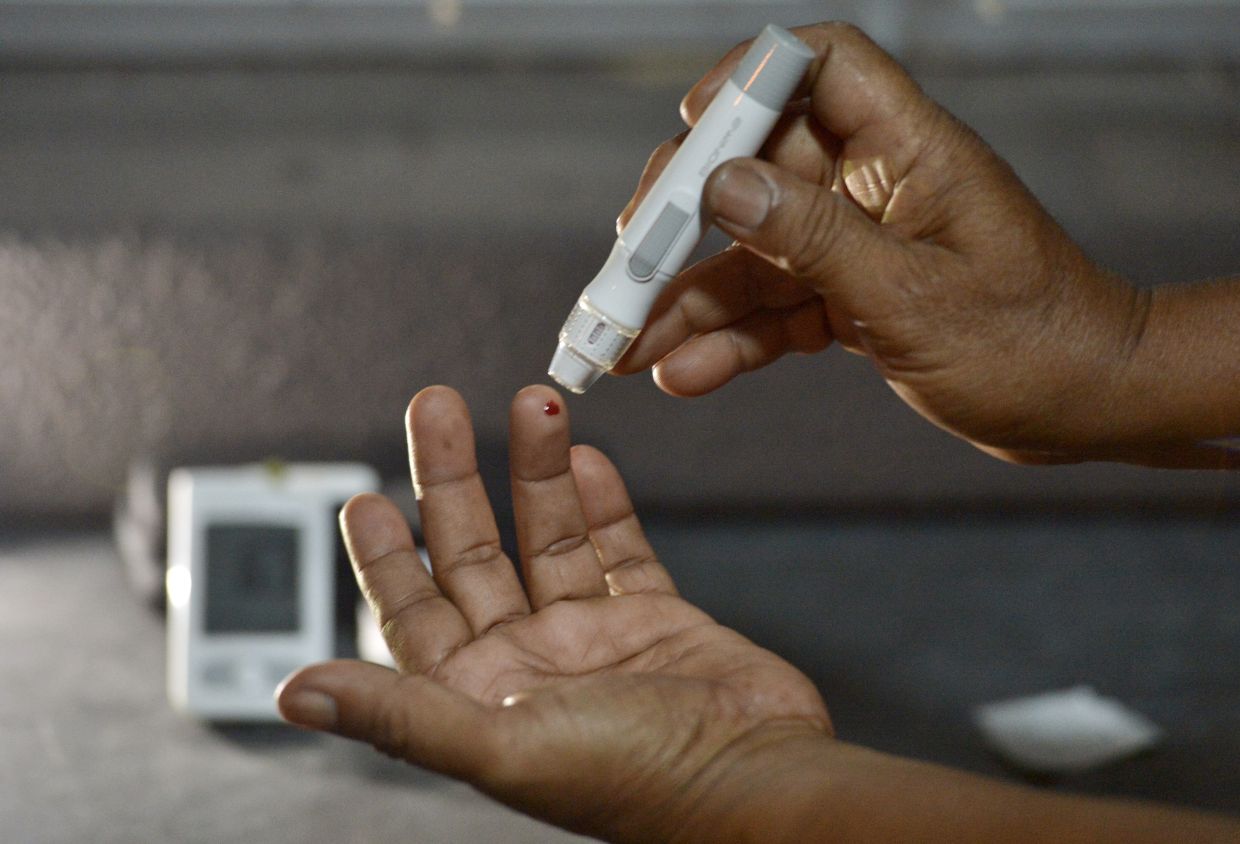PETALING JAYA: It’s a “sweet” disease with a lasting sour taste in Malaysia – diabetes cases continue to rise despite years of trying to get people to cut sugar.
Today, about 21% of our population are diabetics, or one in every five people – numbers that keep growing from 12.1% in 2011, 19% in 2021 and up to the latest figures in 2024.
Again, Malaysia is number one in South-East Asia for having the highest diabetes rate, a record we also held in 2011 and 2021.
Our country even rose up the world rankings, based on data from the World Bank.
From 16th in the world in 2021, Malaysia has jumped to being the 13th country with the biggest prevalence for the disease.
As countries mark World Diabetes Day tomorrow (Nov 14), experts say the rising rates should be treated as a national health crisis.
They also urge for nutrition ratings to be expanded to food – including on restaurant menus and food delivery apps to remind Malaysians to make healthier choices.
Currently, the Health Ministry is developing the mandatory Malaysian Nutri-Grade system which focuses on the total sugar content in beverages, but it has yet to cover food.
This system will be implemented with ready-to-drink products first, before extending it to freshly prepared beverages at eateries.
Here’s a look at the bitter reality in Malaysia when it comes to diabetes:
It was reported that Health Minister Datuk Seri Dr Dzulkefly Ahmad had said about 3.6 million adults in Malaysia were living with diabetes, while nearly 1.9 million people were unaware of their condition.
Among over 200 countries and territories in the world, Pakistan was tops with 31.4% of its population aged from 20 to 79 living with diabetes as of 2024.
In second place was the Marshall Islands (25.7%), followed by Kuwait (25.6%) and Samoa (25.4%).
Bigger bite needed
To nudge Malaysians towards the healthier choice, health experts want the ministry to extend Nutri-Grade ratings to cover food so that more people will be encouraged to consume less sugar and calories.
The Malaysian Medical Association (MMA) has been calling for mandatory calorie and nutrition labelling on food menus, said its president Datuk Dr Thirunavukarasu Rajoo.
“Extending Nutri-Grade and calorie labelling to all eateries would increase public awareness and help consumers make more informed dietary choices.
“Such transparency can be a powerful tool in encouraging healthier eating habits, especially when combined with education and advocacy,” he said.
Federation of Malaysian Consumers Associations chief executive officer Dr Saravanan Thambirajah said limiting the Nutri-Grade labelling to drinks would miss a major source of sugar and unhealthy fats, namely processed and ready-to-eat foods.
“Malaysia could also consider expanding the Health Ministry’s ‘Healthier Choice’ logo to food delivery platforms.
“This helps consumers identify better options quickly,” he said.
Former Medical Practitioner Coalitions Association of Malaysia president Dr Raj Kumar Maharajah said the labelling system in restaurants will also motivate restaurants to improve food recipes and make them healthier.
“We should start such moves gradually and they must be easy to understand,” he said.
Strongly supporting the Nutri-Grade initiative, Diabetes Malaysia president Prof Dr Muhammad Yazid Jalaludin said it was a positive step and will help people understand what they consume.
“Small shifts in daily habits can prevent obesity and diabetes in the long run.
“However, it must be implemented thoughtfully, with education and support for both consumers and food operators,” he said.
Prof Muhammad Yazid said the Healthier Choice logo could be used in menus at eateries but it should not just be about sugar.
“Too much carbohydrates can also lead to obesity and increase abdominal fat, which can later cause diabetes,” he said.
Fresh-faced patients
To make matters worse, more younger people are becoming diabetics.
Calling this a worrying trend, Dr Thirunavukarasu said the situation suggested that efforts to educate and influence lifestyle habits among our younger population have not been effective enough.
“Childhood obesity is also on the rise, largely due to poor dietary habits, high sugar intake and insufficient physical activity,” he said.
Prof Muhammad Yazid said type two diabetes (when the body cannot use insulin properly to maintain healthy blood sugar levels) was also seen in teenagers these days.
“This is very concerning, pointing to the urgent need for early education and healthy school environments,” he added.
Concurring, Dr Raj Kumar said more diabetics were being diagnosed in their late 20s or early 30s.
“This was unheard of a decade ago,” he added.
However, the early detection of diabetics might also mean that primary healthcare has become stronger, leading to earlier treatment and counselling, Dr Raj Kumar said.
He said it might have contributed to the slight dip in deaths from diabetes over the past three years.
From 2,792 in 2021, the number has dropped to 1,975 in 2023, based on the Statistics Department’s data on causes of death.
Start at school
Healthy habits must start at school to address Malaysia’s diabetes problem.
Consumers’ Association of Penang president Mohideen Abdul Kader suggested that the authorities banned the sale of junk food in school canteens.
“The government should consider removing vending machines selling junk food and sugary drinks from hospitals, airports, and schools, and instead provide drinking water dispensers in these places,” he said.
He said restrictions on food hawking should also be imposed within a fixed perimeter around schools to prevent children from buying unhealthy food.
MMA’s Dr Thirunavukarasu said healthy habits must start early and health education should be made a stronger component of our school curriculum, focusing on nutrition, physical activity, and lifestyle choices.
“Schools should also lead by example, providing healthy food options,” he said.
It also helps for the public to be informed of how much sugar they consume in everyday food.
Below are examples of the sugar content in some common food and drinks:







